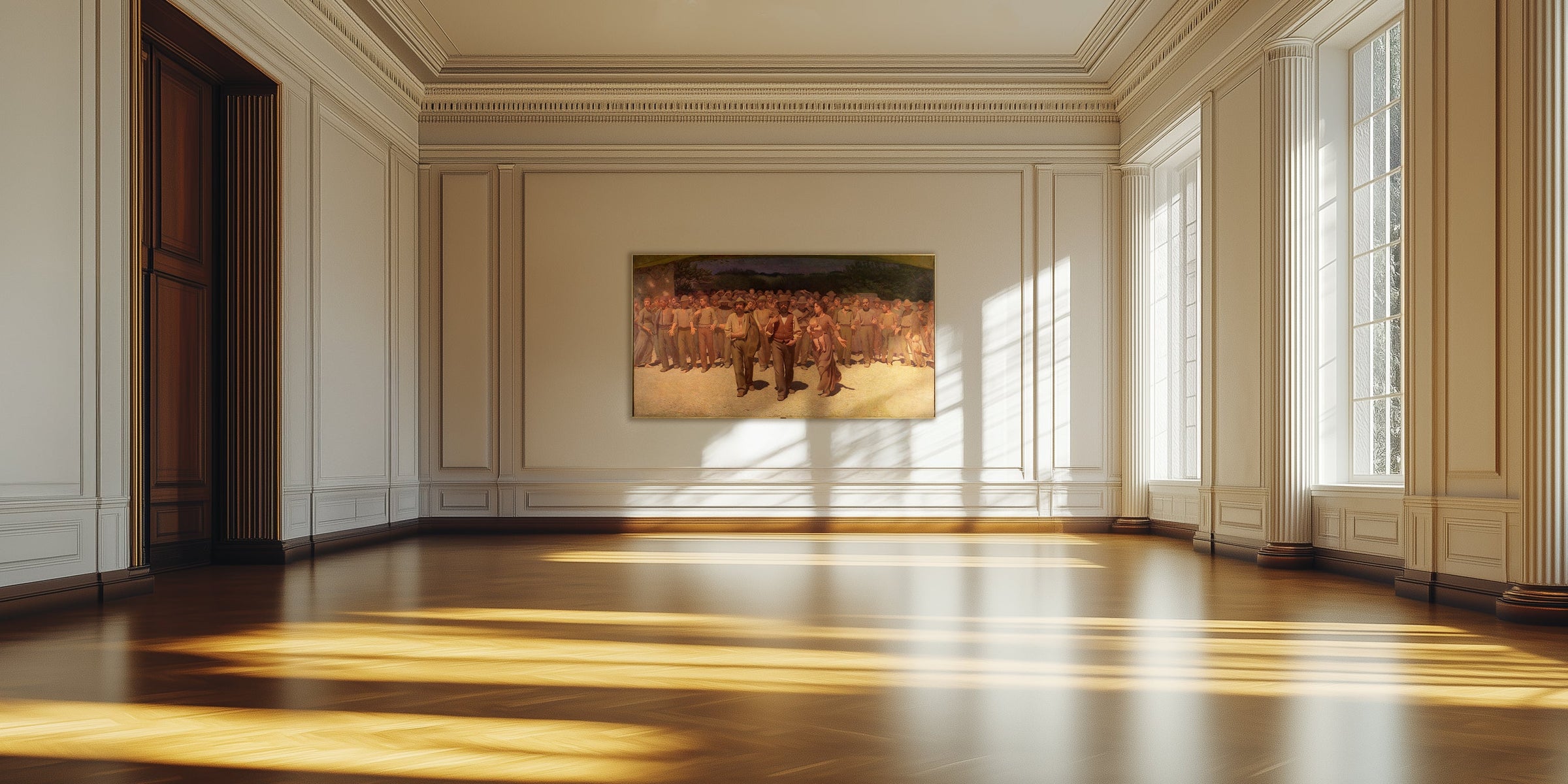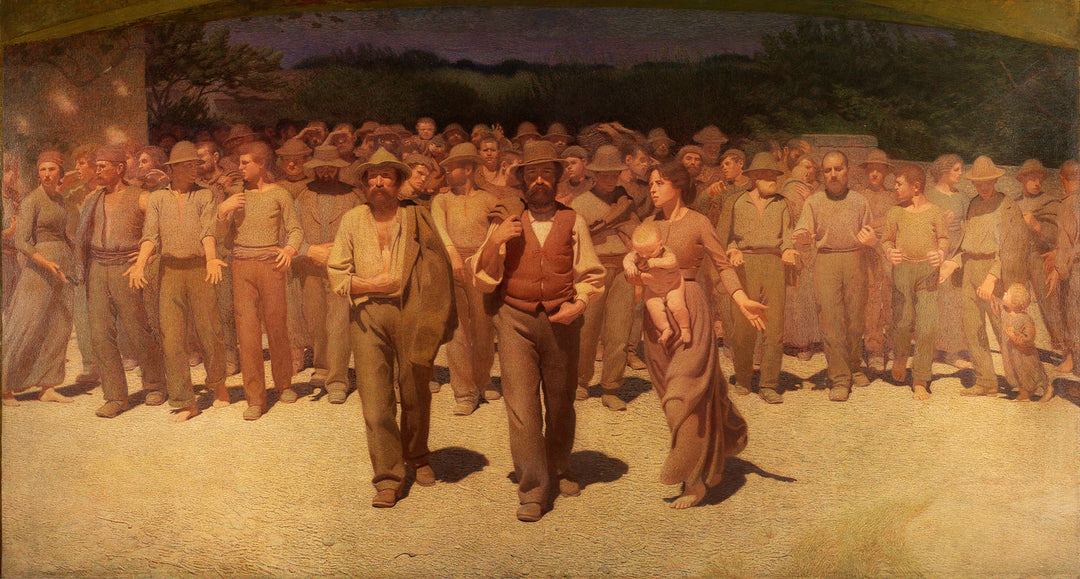
Giuseppe Pellizza da Volpedo

Giuseppe Pellizza da Volpedo, born on July 28, 1868, in Volpedo, Italy, is a prominent figure of divisionism. Influenced by naturalism and symbolism, Pellizza combined technique and social message in his works. His most famous painting, "The Fourth Estate" (in Italian, Il quarto stato), represents a workers' march and is an icon of the labor movement. This monumental painting showcases his mastery of pointillism, a technique he learned from his contemporaries Georges Seurat and Paul Signac. Pellizza was not only an observer of social reality but also an innovator in the use of color and light.
His works influenced artists like Carlo Carrà and Umberto Boccioni, who later excelled in futurism. Pellizza worked intensely on exploring the human condition and class struggle, central themes in his work. His technique, born from pointillism, of dividing colors to create vibrant luminosity was a significant contribution to modern art. Despite his tragic death in 1907, his legacy endures in the representation of social struggle and artistic innovation.
